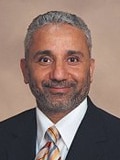
More Mental Health Articles
New Technologies In Dentistry
Part 3
Hard and Soft Tissue Lasers
Because lasers use steady and concentrated light to remove unhealthy tooth structure, they have several advantages over the traditional dental drill.
Because the laser is very bright, special glasses are provided to shield your eyes. The hard tissue laser is then carefully moved over the damaged or decayed portion of your teeth. A water spray is used to cool the teeth that are being treated. After preparation, teeth are usually restored with one of the new white filling materials that can be bonded to the teeth.
The soft tissue laser uses a gentle beam over the affected area. The narrow beam only removes a specific number of cell layers on each pass, so your dentist has precise control.
A number of different kinds of lasers are used in dentistry, and they are particularly useful for treating the gums and soft tissue problems. The benefits of soft tissue laser treatment include faster healing, less bleeding and reduced swelling.
With the hard tissue laser, your dentist can remove some kinds of old fillings, repair cavities, and prepare teeth for bonding. It allows your dentist to remove the smallest amount of tooth structure and place strong, natural looking restorations in the shortest amount of time.
Intraoral Camera
While x-rays provide valuable information that we cant get from any other source, they cant show you everything thats going on in your mouth. Thats why your dentist may have invested in an intraoral camera a highly advanced piece of diagnostic equipment that allows you to see what we see inside your mouth.
The intraoral camera hand piece is approximately the size and shape of a dental mirror. It has a built-in light source, and serves as a tiny video camera that allows us to zoom in on one tooth with 25 times magnification, or give you a “video tour” of your entire mouth. The images are displayed on a television or computer monitor, so youll be able to see problems such as worn or broken fillings, cracked teeth, plaque deposits, cavities next to fillings and excessive wear. We can also print an image for you to take home with you.
The intraoral camera allows you to be an active partner in your dental treatment by enabling you to see what we see inside your mouth. With a clear understanding of your dental conditions, youll be able to make treatment decisions with confidence.
Micro-Dentistry
The widespread use of fluoride has made the surface of teeth so hard that the process of dental decay has actually changed. Before the preventive use of fluoride, decay usually attacked the exposed grooves of a tooth, where it could be found with a dental explorer or x-rays. But today, fluoride has so hardened the outer enamel layer that cavities have gotten smaller and are much more difficult to diagnose.
Cavities now sometimes penetrate into the softer dentin layer through seemingly intact enamel. Its important to catch and treat all cavities early while theyre still in the hard outer enamel layer, because once they reach the inner dentin layer, cavities grow much more quickly. If they reach the pulp chamber, your dentist will have to perform a root canal.
Micro-dentistry is a new science in dentistry that takes advantage of specialized tools and techniques to find and restore small, hard-to-find cavities. We can remove the smallest possible amount of tooth structure and place strong bonded fillings, while often avoiding the need for dental anesthetic.
Micro-dentistry is a new dental science that uses special tools, decay-detecting dyes and air abrasion, to find, remove and restore these tiny new hidden areas of decay.

















